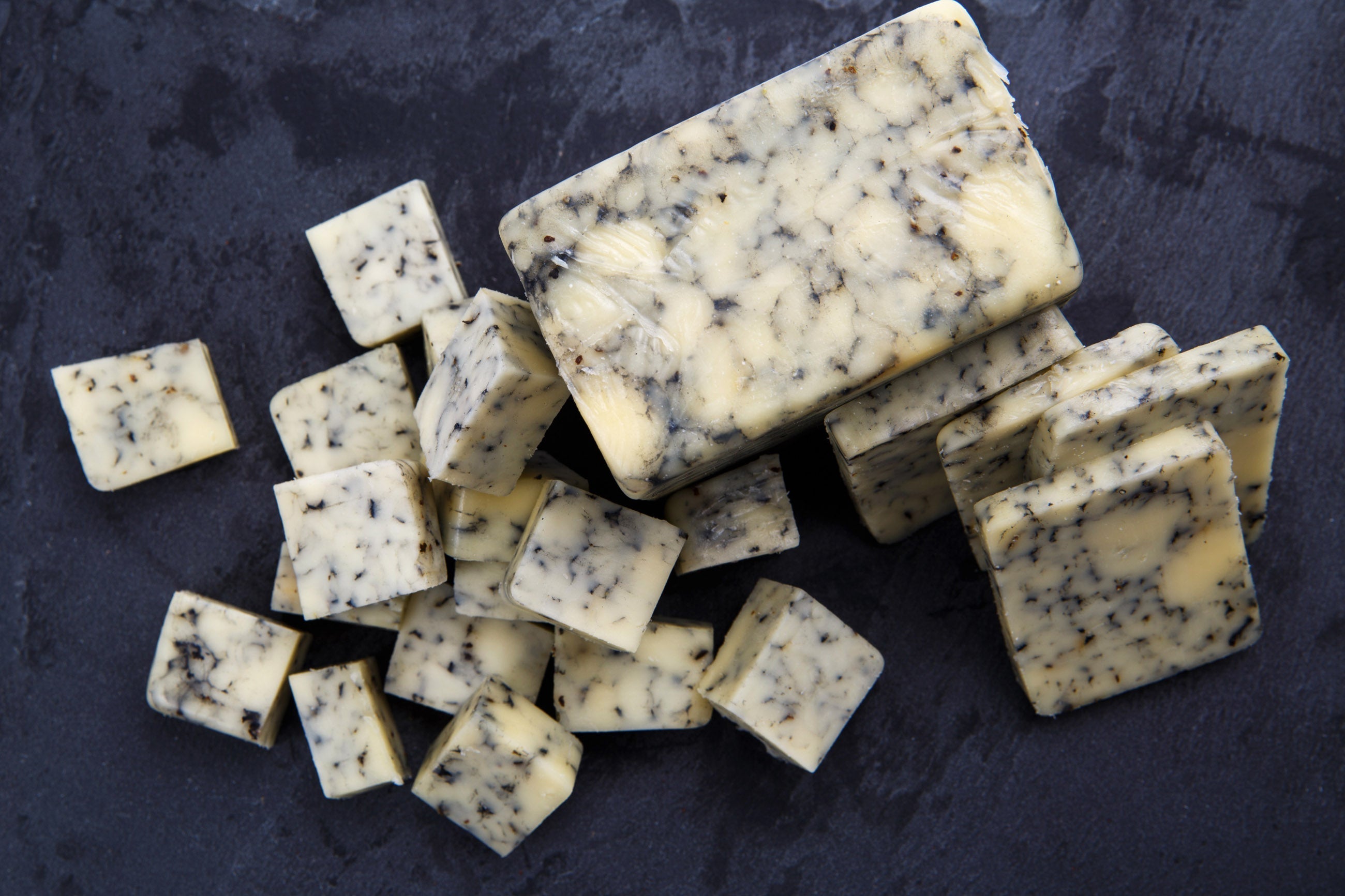Cheese is one of life’s greatest (and most delicious) joys, but nothing spoils that joy faster than opening your refrigerator door and discovering that your favorite cheese has spoiled!
How can you extend the longevity of your cheese after purchasing it, and how and why does cheese spoil? The shelf life of cheese depends on a variety of factors, such as the type of cheese itself, how it’s stored, and whether the cheese’s package has been opened or is still sealed.
At Renard’s Cheese, we specialize in artisan cheese, which is cheese that is handcrafted in limited quantities with traditional, time-honored methods and techniques. Unlike mass-produced cheese, which is often packed with preservatives, we focus on small batches, craftsmanship, and sustainable practices to make sure that our cheese is of the highest quality and lasts as long as possible.
Knowing the right ways to store your specialty artisan cheese means you can keep it and enjoy it in its best condition for as long as you like. Let’s explore the shelf life of different cheeses, the warning signs of spoilage, and tips for how to enjoy your artisan cheese to the fullest. You’ll gain the confidence you need to indulge in your cheese to the very last bite!
The shelf life of cheese
|
|
Hard Cheeses |
Soft Cheeses |
|
Unopened |
Several months |
3-4 weeks |
|
Opened |
3-6 weeks |
1-2 weeks |
Generally, most hard cheeses, like Cheddar or Parmesan, have longer shelf lives and can last for several months when unopened. On the other hand, soft cheeses, like Ricotta or Brie, may only last for a couple of weeks at most. A good rule of thumb is, the harder the cheese, the longer it keeps!
Most packaged foods, like cheese, provide a best-by date. This is, in fact, different from an expiration date. A best-by date indicates the date until which the food is at its best quality. Generally speaking, this means the food can still be consumed safely after this date passes, though its quality may decrease over time.
Regardless, food with best-by dates, including cheese, may still go bad even before that date passes based on a variety of factors, like quality control issues or improper storage. It’s always important to inspect your cheese before consuming it, to make sure it’s still safe to eat.
What affects shelf life?
There are several elements that can impact a cheese’s shelf life. Those include the type of the cheese, the moisture content in the cheese, and how it’s stored.
Cheeses with higher moisture content are softer, and they tend to spoil more quickly than cheeses with lower moisture content, like hard cheese. In our blog post discussing the “affinage,” or age maturation, of cheese, we learned that as cheese ages, moisture slowly leaves the cheese as it becomes harder in texture and bolder in flavor. Go figure that aged cheddars rarely spoil, and only get better with time!
Proper storage of your cheese is crucial to extending its shelf life. Factors like temperature, humidity, and exposure to air can impact your cheese’s longevity, so it’s important to store your cheese properly after use.
It’s recommended to refrigerate cheese after it’s been opened, since that will contribute to its freshness and quality. Once cheese is opened from its package, most will last for at least a few weeks in the refrigerator. Wrap the cheese tightly in parchment paper or cheese bags to prevent it from drying out or absorbing odors. Avoid wrapping your cheese in something non-porous like plastic wrap. Plastic wrap can trap moisture, which leads to mold growth, and accelerate the oxidation process by exposing cheese to light, which can affect flavor.
Signs of spoilage
Cheese starts to spoil due to the microbes that find themselves living on or inside it. These bacteria are different from the ones used to age cheese, and they can be harmful in and of themselves or can leave behind toxins that make you sick. This is how food-borne illnesses form, and it’s important to be aware of the signs that your cheese may have turned after it’s been opened.
Unless you’re expecting to see some naturally occurring mold on your cheese, like with Blue cheese, visible mold and discoloration is often a sign of spoilage. On hard cheeses, if you see specks of blue or green on the cheese’s surface, it may not all be lost! Simply cut at least one inch around and below the mold and discard it. The rest of the cheese is still safe to eat!
If you see white patches on the surface of your hard cheese, don’t worry, those are perfectly normal and actually very delicious to eat! These are often flavor crystals that form during the aging process when lactic acid combines with calcium.
With soft cheeses, you’ll want to discard all of the cheese if you spot mold. More moisture in soft cheeses can become a breeding ground for harmful bacteria, meaning it’s no longer safe to eat.
Likewise, off odors that you aren’t anticipating, such as with Limburger or Brick, may be indicating that your cheese has turned. Be aware of sour, rancid, or ammonia-like smells in your cheese.
Texture can also be a good indicator of spoilage. While aged cheeses tend to be dry and crumbly, if you have a cheese that isn’t aged and has those same qualities, that may be a sign your cheese has gone bad. Dry, crumbly, or slimy cheese shouldn’t be consumed and should be thrown away.
If your cheese looks and smells fine, and you’re willing to sample it, some flavors can indicate it’s past its prime. Dispose of your cheese if it has an unintentionally bitter flavor, a fermented fruit taste, or a fizzy sensation on your tongue. If you have a strong and healthy immune system, you’ll be fine if you consume a bit of spoiled cheese, but it shouldn’t be kept if you experience any of these warning signs.
Tips for extending the shelf life of your cheese
Preservatives assist in reducing waste from food spoilage and aid in extending the life of several foods, including cheese. Don’t worry—at Renard’s Cheese, we don’t use unnatural preservatives with unpronounceable names on our artisan cheese! In fact, our favorite preservative is also a great flavor enhancer: salt. We use salt during the cheesemaking process to not only contribute to the cheese’s flavor, but to ensure that the cheese will last as long as possible within its packaging.
After our cheese is packaged safely, we ship out orders with coolers and ice to guarantee their freshness when they arrive at their destination. Whether you’re shipping our artisan cheese just down the road in Sturgeon Bay or across the country to Los Angeles, California, we recommend including cooler and ice to your order to assure that your cheese is of the highest quality when you receive it.
Once you have your cheese, feel free to enjoy it for as much as you like! However, don’t let your cheese sit at room temperature for extended periods of time. While hard cheeses can tolerate mild temperatures for a few hours, soft cheeses shouldn’t be left out for long, lest they lose their freshness. A general rule to follow is to store your cheese away after it’s been left out for two hours, as rising temperatures will quickly degrade your cheese.
When it comes to storage, make sure to store your cheese properly! The best storage practice is wrapping your cheese in wax paper, parchment paper, or cheese paper and then placing it in an airtight container.
If you can, try to wrap soft cheese in its original packaging before putting it in the refrigerator. If you purchased soft cheese in brine, keep your cheese in the liquid and make sure the container’s lid is sealed tight.
Storing cheese in your refrigerator at 40 degrees or lower immediately after you’re done using it will help extend its shelf life. Once your cheese is opened and out of the package, wrap it tightly and refrigerate it on the top or middle shelf, or in your cheese drawer. Try to store your cheese in the coldest and darkest part of the refrigerator, away from fluctuating temperatures and air conditions.
Some cheese you can even freeze for longer storage, but this is typically only applicable to hard cheeses. Soft cheeses don’t freeze well because of their high moisture, which might lead to large ice crystals which will result in a grainy, crumbly texture upon thawing your cheese.
Armed with the knowledge of how to preserve your cheese, pick up some artisan cheese from our store or shipped online straight to your door! You can store hard cheeses for great lengths of time, while you can snack on soft cheeses right away. No matter what kind of cheese you order, you can always enjoy them well in advance to make more room in your refrigerator for the next batch.




